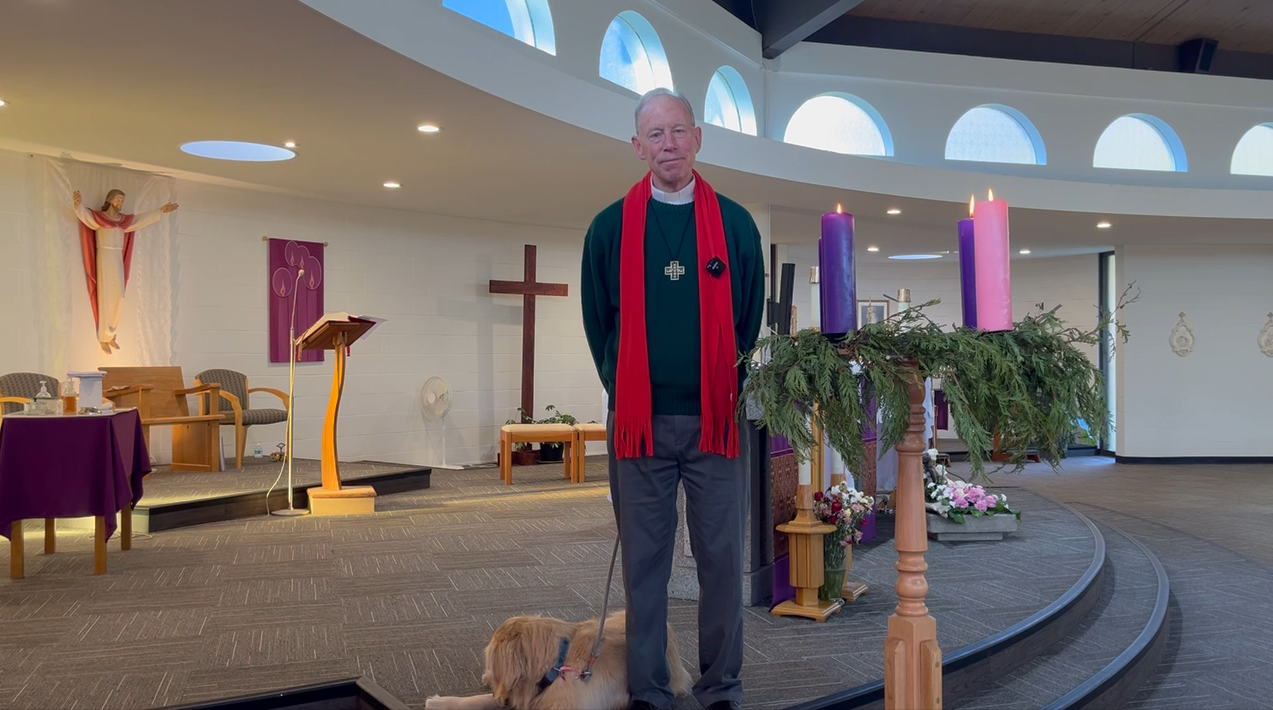She was distraught. Mary Magdalene's beloved Lord and Teacher had been crucified and then laid in the tomb; what followed was a long, slow Sabbath, anxiously awaiting her chance to attend to the final preparations of his body. So she did as many of us would after a tragedy: rose early and hastened to the last place her loved one was laid to rest.
But sprinting alone to a tomb on the outskirts of Jerusalem before dawn would have hardly been acceptable behaviour for a beautiful woman in those times, and brings to mind another narrative in Scripture, found much earlier, in the third chapter of the Song of Songs. This opens with another bold woman, who cries out: “I will rise then and go about the city; in the streets and crossings I will seek Him whom my heart loves” (1b). This woman (whose name we never hear) meets with watchmen whom she begs to tell her where her beloved is. Almost immediately after that encounter, she turns and finds him, exclaiming “I took hold of him and would not let him go.” In addition, her beloved is perfumed with frankincense (an incense used by the Hebrew people to venerate God) and more curiously, myrrh—a burial spice! This begins to sound very familiar in light of John's resurrection narrative.
Here also, our heroine meets with watchmen—angels, in fact, who sit within the tomb. And no sooner has she spoken with them than she turns and sees Jesus—only she mistakes him for the gardener. But here, the Beloved speaks. It’s interesting that he asks the same question of her that the angels did: “Woman, why do you weep?” but adds, “whom are you looking for?” Jesus stands before her, the fulfillment of all human desire and the source of joy—the very One whom she seeks. Once the Risen Christ calls Mary by name, she recognizes him, but then is met with what I've always considered a rather mysterious injunction: "Do not cling to me, for I have not yet ascended to the Father. But go to my brothers and say to them, ‘I am ascending to my Father and your Father, to my God and your God'." (Jn. 20: 17). The first half of Jesus' reply seems a direct answer to the bride from the Song of Songs, and indeed to anyone who has lost a loved one to death. And yet there's a deeper meaning in His instructions to Mary.
In this encounter, Mary Magdalene can be taken to symbolize not only the woman in the Song of Songs, but also the Church, in her longing and search for Christ. In the Old Testament, Jerusalem is likened to a beautiful woman who, having been espoused by God, turns away from Him to infidelity and then prostitution. But God forgives her sins and restores her to her original beauty and purity, espousing her in ‘love and in mercy’ (Hosea 2:21). Ezekiel and Jeremiah had also taken up this theme in their exhortations to God’s people.
Much like Jerusalem, Mary Magdalene had a past which was far from spotless. Yet, her sins were forgiven “because of her great love” (Lk. 7:47). Within our mother the Church, we too have a history of mistakes and times we've turned from Christ, yet he never tires of forgiving us and welcoming us back! Or as St. Paul puts it, "Christ loved the Church and gave himself up for her, that he might sanctify her" (Ephesians 5:25). Thus, continually sanctified and redeemed by Christ, "the Church is the spotless bride of the spotless Lamb" (CCC 796).
Here emerges a common theme of reunion: between the bride and groom; Jerusalem and God; Mary Magdalene (along with her fellow disciples) and the Risen Lord; and the Church with Christ, her mystical Bridegroom. Yet there's another layer I hope to return to, the Risen Jesus' command to Mary (and indeed to us as the Church): "Go to my brothers and say to them, ‘I am ascending to my Father and your Father, to my God and your God’." This is the essential call of Jesus, our heavenly bridegroom.
I'm sure Mary Magdalene just wanted to hold tightly to Jesus, basking in the consolation of his presence forever, as do we. In the book of Revelation, John sees the New Jerusalem “gleaming with the splendour of God” and "adorned as a bride" (Rev. 21:11); and the resounding reply of this Heavenly Jerusalem, closing the words of Scripture, is simply “Come, Lord Jesus!”(22:17, 20). This is the cry of the bride to her beloved; of Mary Magdalene as she searched for her Rabbi; of the Church to Jesus, and it is a beautiful thing.
But the Risen Christ is also calling us to carry His Good News, or Gospel, to all our brothers and sisters, even to the ends of the earth. "Entering His glory, we become absorbed by it, but this very absorption sends us out into the world in sacrificial love like that of Jesus" (Hans urs Von Balthasar). Herein is the twofold movement of Christ as Bridegroom: first making himself known to us and filling us with the glory of his presence; then sending us out to share the joy of that union with others.
This is the Easter message, proclaimed beginning with the apostles at Pentecost, echoed by the Church today, and concluding only in the fullness of time, until at last, we ‘all may be one’ and are gathered unto Christ, in the eternal Wedding Feast of the Lamb.
Let us also go unto our brothers and sisters, proclaiming the Risen Christ this Easter.
by Grace McGeragle, St. Peter's Parish, Nanaimo



.png)
.png)
